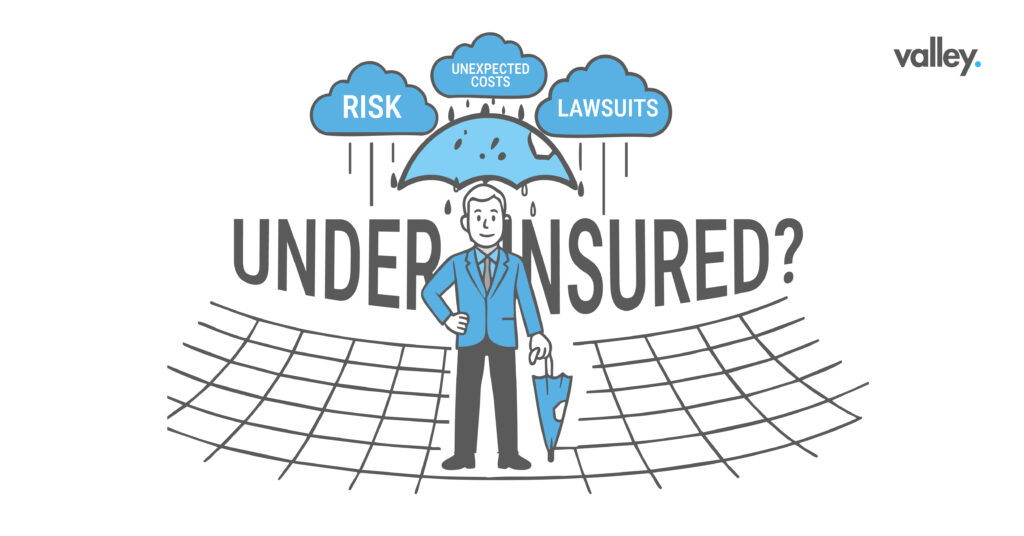Trucking Underinsurance: The Risk CEOs Can’t Ignore

Trucking underinsurance is a hidden risk that many CEOs overlook. Insurance often feels like a checkbox item. You sign the papers, store the policy, and assume your business is protected. The problem is that coverage gaps usually appear only when disaster strikes. By then, it is too late. Insurance is meant to protect against unexpected events, but if your coverage does not match your current operations, it may fail when you need it most. This article explains why underinsurance is such a threat, real-world cases of businesses caught off guard, and how fleets can protect themselves.
Quick Answer
Underinsurance happens when policies do not fully cover the company’s assets, operations, or risks. Fleets often become underinsured due to outdated policies, rapid growth, or cost-cutting. The solution is an annual review, updated coverage after changes, and working with trucking-specific brokers.
The Hidden Cost of Thinking You’re Covered
A logistics company in the Midwest learned this lesson the hard way. One of their warehouses caught fire, destroying goods and equipment. The property insurance covered the building and inventory, so they thought they were safe. But their business interruption coverage was too low. Payroll, rent, and utilities kept piling up even though revenue was gone. The company paid $1.1 million out of pocket. They survived, but the setback left them years behind competitors. This story is not rare. Many fleets face losses, delayed growth, or even closure due to underinsurance.
Why Fleets Become Underinsured
Underinsurance rarely comes from neglect. Common reasons include:
- Outdated limits: Policies set years ago may not match today’s costs or fleet size.
- Rapid growth: New trucks, warehouses, or services can outpace old coverage.
- New risks: Cyberattacks, supply chain disruptions, and extreme weather were minor a decade ago but are now serious. (Insurance Business Magazine, https://www.insurancebusinessmag.com/us/news/catastrophe/what-can-be-done-as-climate-change-drives-up-insurance-rates-509176.aspx ).
- Cost-cutting: Lowering limits to save on premiums often leads to bigger risks later.
The Domino Effect of a Coverage Gap
Coverage gaps trigger more than just financial pain. They create ripple effects:
- Cash flow strain: Without payouts, reserves dry up fast.
- Operational delays: Late payments and missed deliveries erode trust.
- Employee morale: Threats to payroll and benefits increase turnover.
- Reputation hit: Carriers that fail customers may lose contracts for years.
Real-World Scenarios of Underinsurance
Several North American carriers faced serious setbacks due to gaps in coverage:
- Cargo theft: A fleet lost electronics worth millions. The policy only covered $500,000 per load, forcing the company to pay the rest. (Transport Topics, https://www.ttnews.com/articles/trucking-cargo-theft-2024).
- Storm damage: A hurricane flooded a warehouse. Property insurance covered part of it, but without flood coverage, losses reached hundreds of thousands.
- Cyberattack: Dispatch software was shut down for days by ransomware. With no cyber policy, the company absorbed recovery costs and late penalties. (FreightWaves, https://www.freightwaves.com/news/cloudflare-survey-finds-cyberattacks-and-fraud-flourishing-in-logistics).
How to Avoid Being Underinsured
Fleets can reduce risks by making policy reviews part of operations:
- Annual reviews: Update limits to match current fleet size, property values, and revenue.
- Check sub-limits: Business interruption and equipment categories often have hidden caps.
- Update after changes: Adding services, trucks, or warehouses should trigger policy checks.
- Compare options: New policies may offer better terms or bundled coverage.
- Use trucking specialists: Brokers familiar with the industry spot risks general agents may miss.
The Long-Term Value of Adequate Coverage
Insurance is not just for surviving the next crisis. It builds resilience for growth. Well-covered fleets recover faster, keep stronger ties with shippers, negotiate better renewal terms, and protect employees even during downturns. When seen as a business tool rather than a formality, insurance becomes a shield that grows with the company.
FAQs on Trucking Underinsurance
What is underinsurance?
- It is when policies exclude risks or coverage limits are too low to cover actual losses.
How do I know if I’m underinsured?
- If you haven’t reviewed policies in a year, or if your fleet has grown, your coverage may no longer fit.
Is it common in trucking?
- Yes. Studies show many fleets, especially small ones that expand quickly, are underinsured.
Does better coverage always cost more?
- Not always. Specialist brokers can often find bundled coverage at competitive rates.
Can underinsurance affect contracts?
- Yes. Many shippers require proof of specific coverage. Gaps may cause lost contracts or legal disputes.
Final Thoughts
Underinsurance is one of the most overlooked risks in trucking. It stays hidden until a crisis exposes it. CEOs who review coverage, update after changes, and work with experts can shield their fleets from long-term financial and reputational damage. The real cost of underinsurance is not premiums saved, but millions lost when coverage fails.
